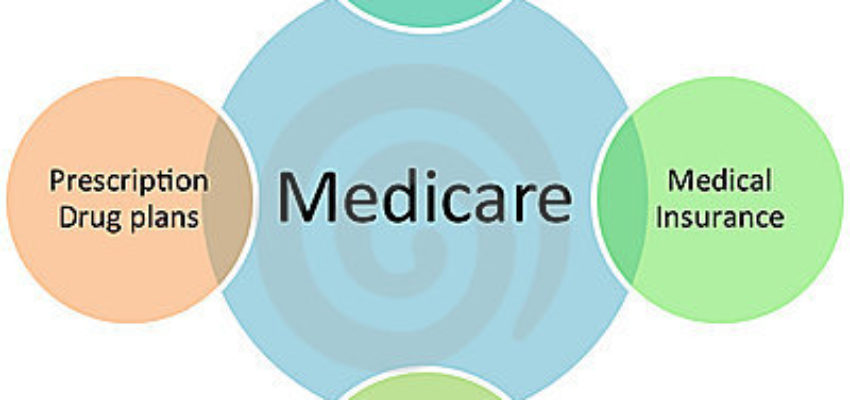Medicare Advantage, Supplement, Rx Plans Explained
The key to selling Medicare plans is having a full understanding of Medicare Advantage (MAPD), Medicare Supplement (also called Medigap) and Medicare Part D plans. If you understand all three plans you will have far greater success in the field or on the phone. Clients have different situations which may mean they need an MAPD plan or maybe a supplement and drug plan. It depends on their circumstances. Here we will break down the three type so plans with the blog post Medicare Advantage, Supplement, Rx Plans Explained.
CLICK HERE FOR A RECORDING OF OUR MEDICARE BASICS WEBINAR
Medicare Advantage (MAPD) Plans (Also called Part C of Medicare)
Medicare Advantage plans are offered by private insurance companies as primary plans in place of Medicare A and B. In other words, the doctors of hospitals will bill the MAPD plan instead of billing Original Medicare. MAPD plans provide Medical coverage, drug coverage (The part D benefit) and often times will provide ancillary benefits such as vision and dental. Important things to know about Medicare Advantage plans…
GENERAL INFORMATION
- The insured must have Medicare A and B to enroll in an MAPD plan. They will still pay the Medicare Part B premium.
- The Medicare Advantage plan is Primary when the client enrolls. This means that all the doctors, hospitals and testing services are billed through the Advantage company. It will not be billed through Original Medicare.
- Medicare Advantage plans include the Part D drug benefit. The insured uses one card for Medical services and for when they get drugs in the pharmacy.
- Advantage plans have networks. If the doctor is not in the network, the services will not be covered. (unless its an emergency or urgent care situation) Original Medicare will not cover any portion of the cost when someone receives services from an out of network doctor on an Advantage plan.
- Medicare Advantage plans have copays for medical services received. They work in a similar manner to a group/employer health insurance plan.
- You CAN NOT buy a Medicare Supplement or a stand along Medicare Part D plan with an advantage plan.
- You must get a SCOPE OF APPOINTMENT FORM when making any Medicare Advantage sales presentation
- Stand alone part D drug plans do not necessarily have better benefits than the part D drug benefit in an advantage plan even though the Advantage plan has $0 premium
WHEN CAN SOMEONE ENROLL?
- People can only enroll in an advantage plan at certain times. ENROLLMENT RULES FOR MAPD
- When they turn 65 they can enroll 3 months before the month of their 65th birthday, the month of the birthday or 3 months after the birthday.
- If they sign up for Medicare A and B at a time other than when they turn 65. Maybe someone had coverage through work and did not sign up for Medicare Part B until age 68. When they sign up for part B they would also be able to sign up for an MAPD plan.
- If they have a special election period such as moving out of the state, losing group coverage, becoming eligible for a state or federal drug help program CLICK FOR A LIST OF SPECIAL ELECTION PERIODS
- They can make a change to an MAPD plan or out of an MAPD plan every January 1st. The time to make a change is called the AEP which runs from October 15th to December 7th. A change election made during that time will start on January 1st.
Strengths and Weaknesses of an MAPD plan
- Many MAPD plans have $0 monthly premium (Client still pays the part B premium however) so it can be a big cost savings for those that are normal to light users of health care.
- MAPD plans include prescription drug coverage (even in the $0 premium plan) so its a way to get Part D coverage at 0$ premium
- Some MAPD plans have additional benefits like vision and dental. Plans can also have a number of other value added services that are not available with Original Medicare.
- They have co-pays for services and out of pocket maximums the client would need to pay in the event they had a large number of co-pays and medical services.
- They cover full annual physicals every year at no cost
Weaknesses
- They have co-pays for medical services which can add up if someone is heavy user of care.
- They have networks. Clients must adhere to the network in order to receive care
- They have pre-authorization requirements the provider of care must abide by.
Overall, Advantage plans are very popular and tend to be the choice for a majority of seniors. Many like the idea of paying $0 premium and then only paying co-pays when the receive services. If a client does not want any part of a doctor network and/or do not want to pay medical co-pays, you may want to look at a Medicare Supplement instead.
Medicare Supplement Plans (Also called Medigap plans)
If someone does not want an advantage plan, they may want a Medigap plan. Private insurance companies offer Medigap plans. Medigap Plans are very different from MAPD plans. They are secondary to Original Medicare (They pay the portion of Medical costs that Medicare does not pay). These plans do not pay primary like a Medicare Advantage plan does. Key points of Medicare supplement plans are…
- There are a number of plan options available differentiated by alphabet. Plans A through N. The more popular plans are F, N,G and L.
- Plans are standardized which means the benefits for a certain plan (such as F) are the same regardless of the company offering it. The only difference is in the price they want for it.
- Supplements have monthly premiums ranging from $33 a month to $300 a month depending on the plan letter, company offering and state it is offered in. This is in addition to the Original Medicare Part B premium
- Medicare Supplement plans DO NOT offer drug coverage. A separate part D plan must be purchased if the insured wants drug coverage.
- Medicare Supplement DO NOT have a network. Providers that accept Original Medicare accept the supplement.
Strengths
- Some clients do not want to deal with a network. Medicare Supplement plans allow them to go to any provider that accepts Medicare
- The Supplement plan will cover them in any state as long as the doctor accepts Medicare. (Some plans also have foreign travel coverage)
- A plan F has $0 medical out of pocket and a plan N and G have very limited out of pocket. Clients that utilize a lot of medical services may be better off with one of these plans. This can save them substantial money over paying all the copays from an advantage plan.
- Clients do not need to worry about any prior authorizations or pre approvals from the insurance company when they use a Medicare Supplement plan.
Weaknesses
- You need to pay a premium for supplement plans. This is in addition to the part B premium they insured already pays.
- Medicare Supplements do not include prescription drug coverage. The insured must buy a stand alone part D plan to get drug coverage
Overall- Medicare supplements are very good options for clients that do not want to deal with a network or copays. Ask clients questions to determine if they are a candidate for a Medicare supplement plan or if they would prefer to have a Medicare Advantage plan.
Medicare Part D plans
Medicare Rx part D plans are stand alone prescription drug plans. A large list of companies offer a huge number of Medicare part D plans. Insurers offer different plans in different counties and states which can make it difficult to keep track of what is available in each area. Part D plans have a monthly premium and also different copays. The copay will depend on the tier of the drug clients purchase. Here are some points about Part D plans.
- Enrollment rules (when you can enroll) and CMS sales rules for drug plans are the same as Medicare Advantage plans.
- A insured may not have a Part D drug plan and a Medicare Advantage plan at the same time under any circumstances.
- Clients who have a MAPD plan and then enroll in a part D plan, will be dis-enrolled from the Advantage plan on the effective date of the part D plan.
- You must obtain a SCOPE OF APPOINTMENT FORM when you conduct any sales meeting to sell a part D plan
- Different companies and plans will put the medications in different tiers. Be aware that some drugs may not be it the companies formulary
- Part D drug plans have the Coverage Gap which you will need to explain to clients.
- A client can decide to change Part D drug plans every AEP from October 15th to December 7th.
- Clients can also enroll in a part D plan during the Medicare Advantage Disenrollment Period ( MADP) from January 1 to February 14th
When selling Medicare plans it is important to have access to the most competitive carriers in the area. You also need to be able to sell MAPD, Medigap and Part D plans as consumers will have different needs. Your goal as a broker/agent will be to identify the need and recommend the correct type of Medicare plan based on the information your clients provide. The next step is to learn the various marketing strategies available to sell MAPD, Medicare Supplement and Part D plans. Email (Edward@croweandassociates.com) or call (203-796-5403) our office in the event you have any additional questions.









Leave a Comment